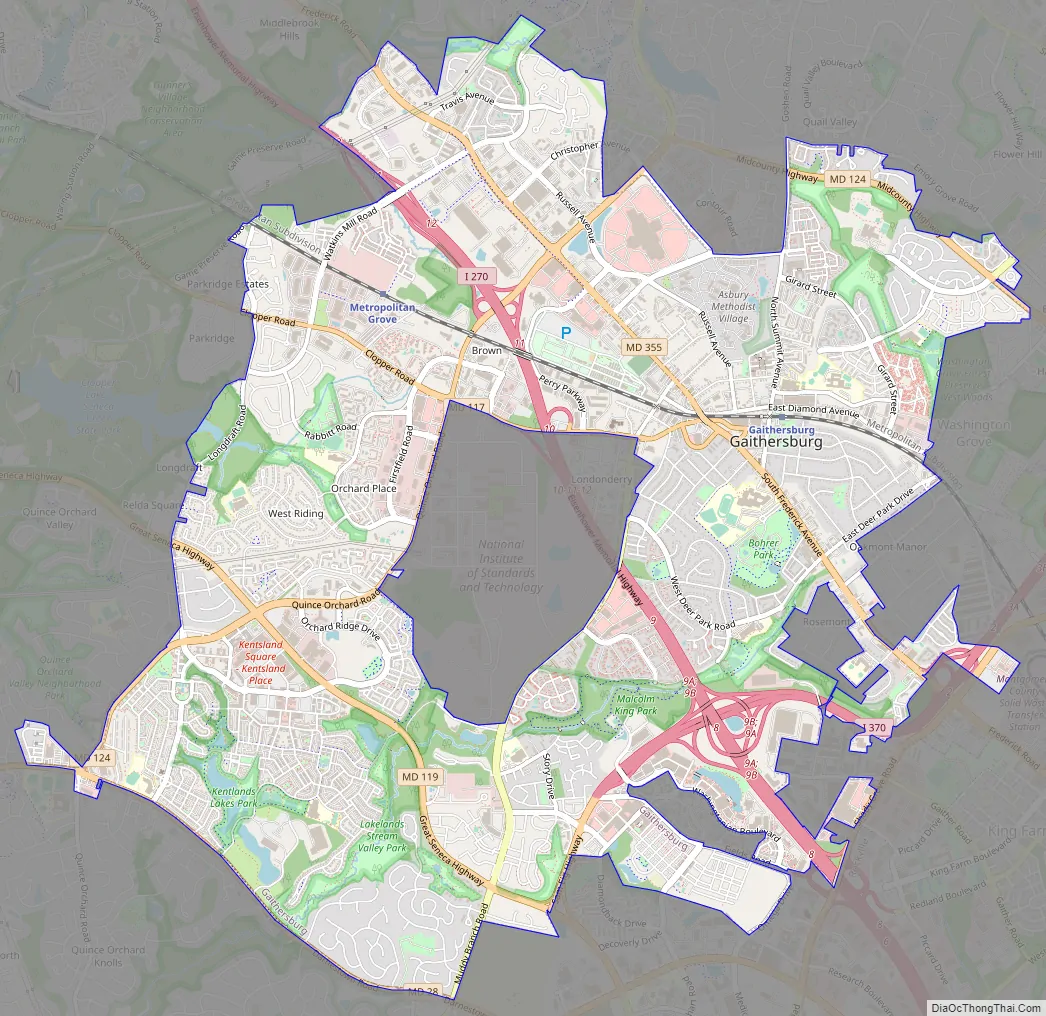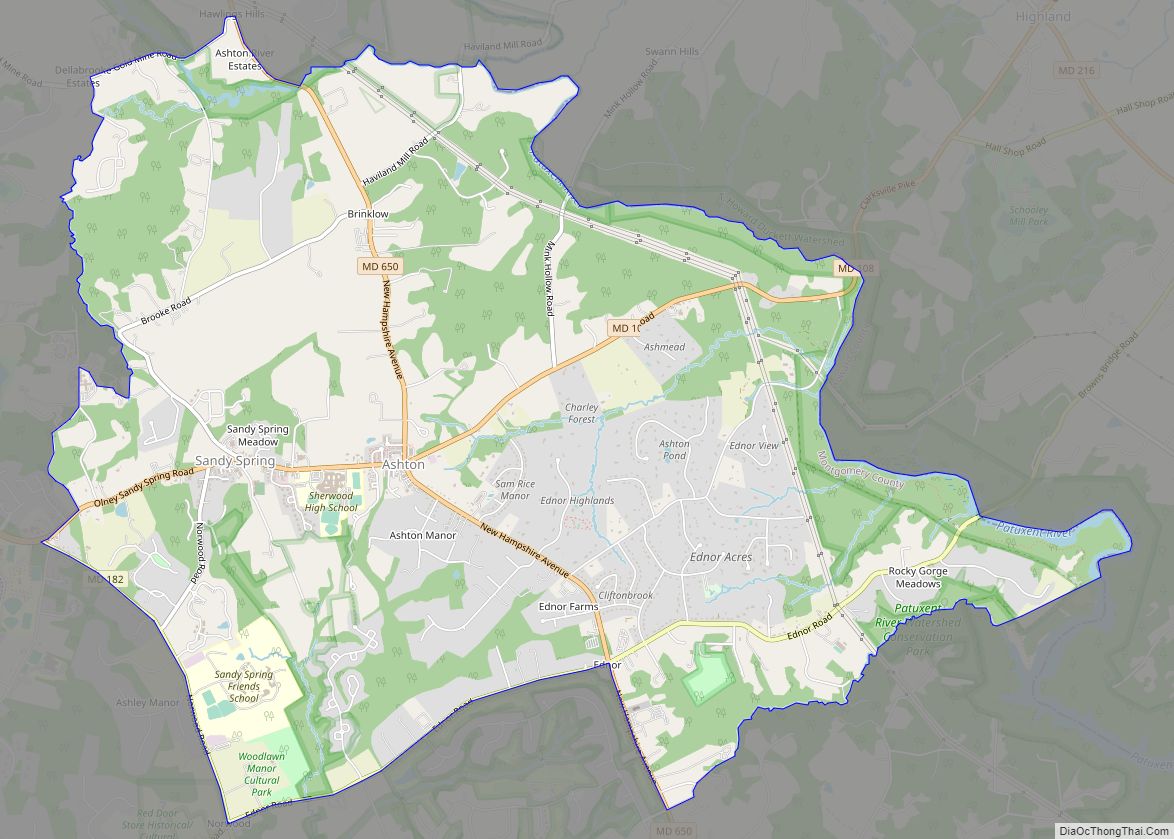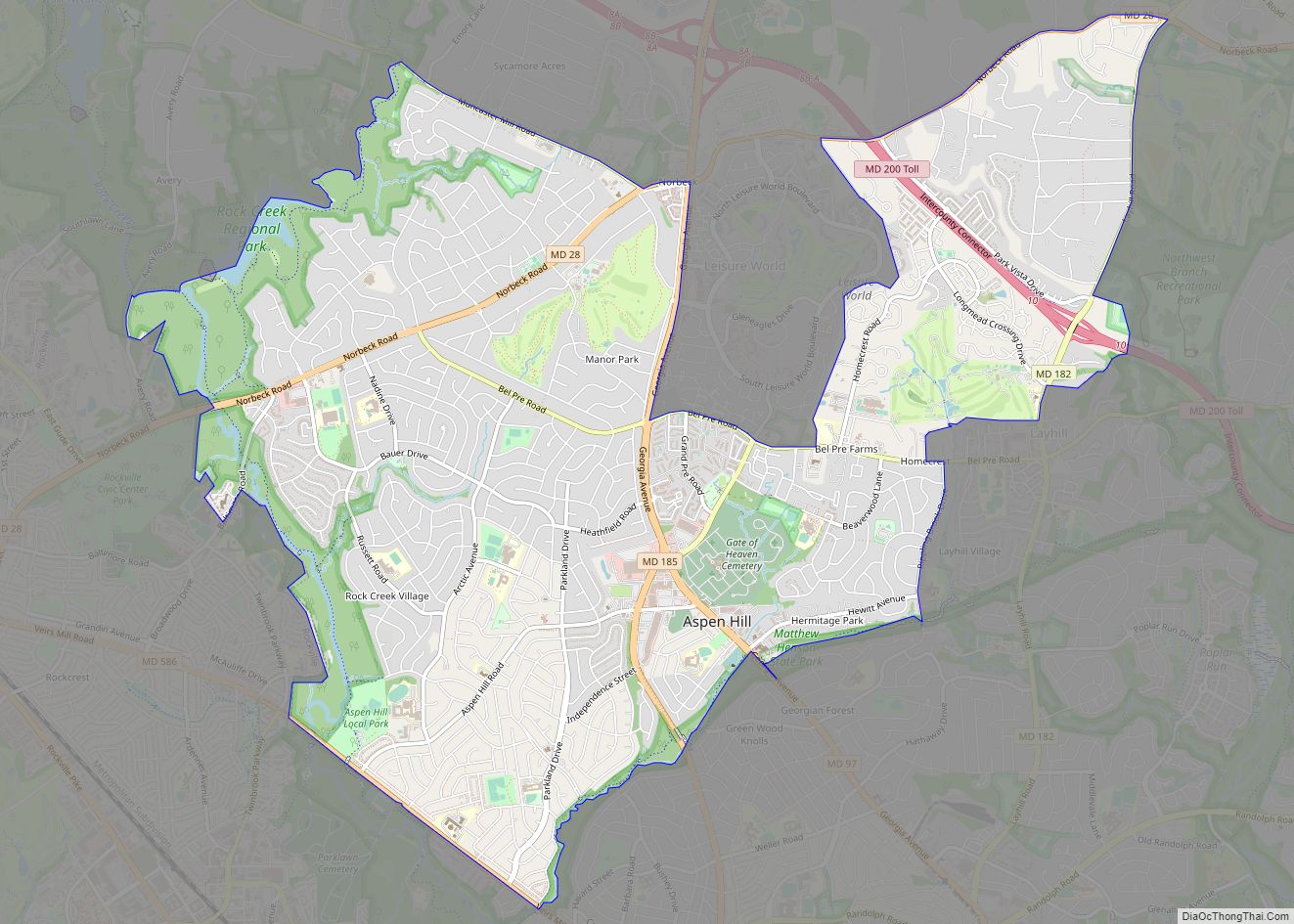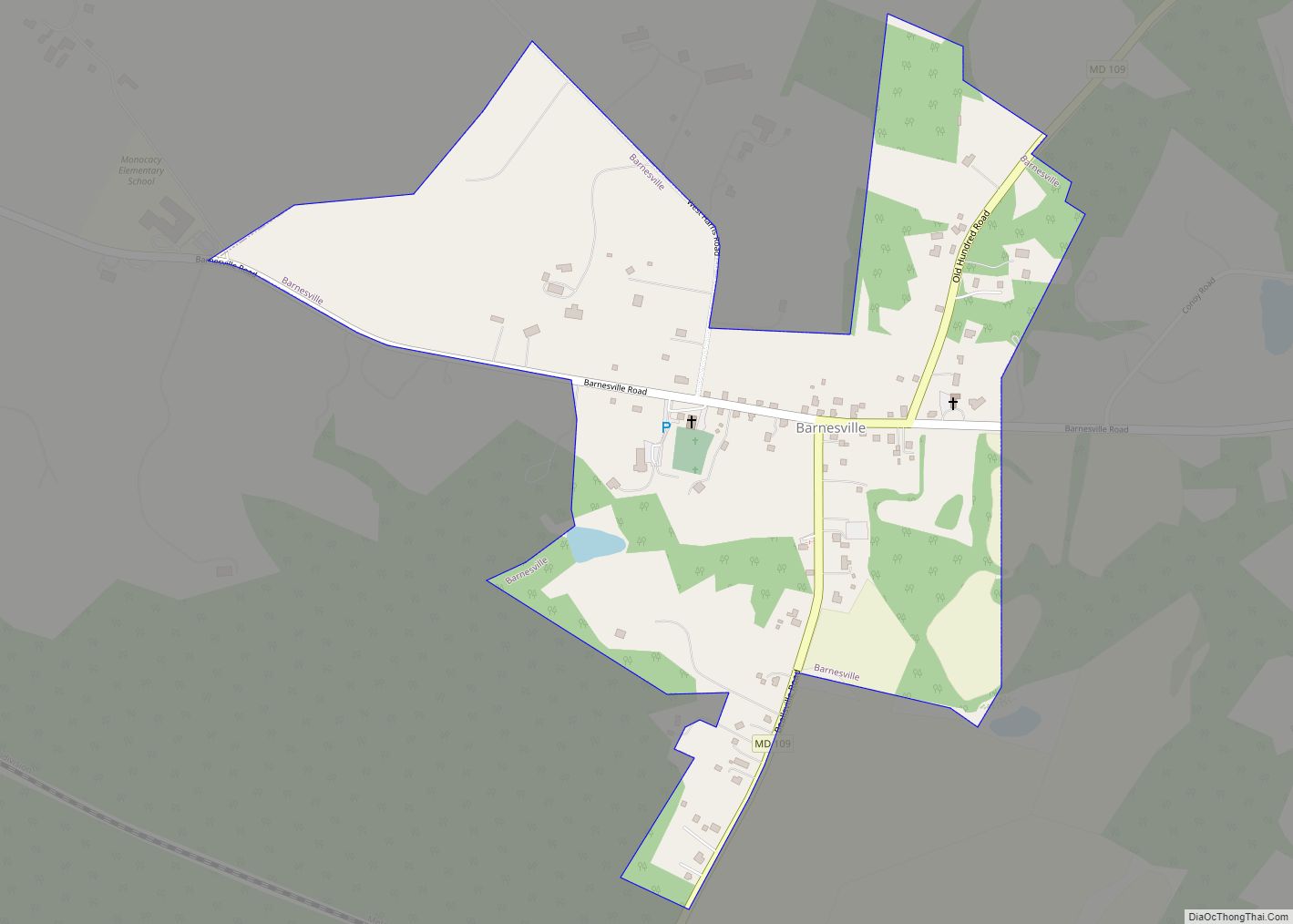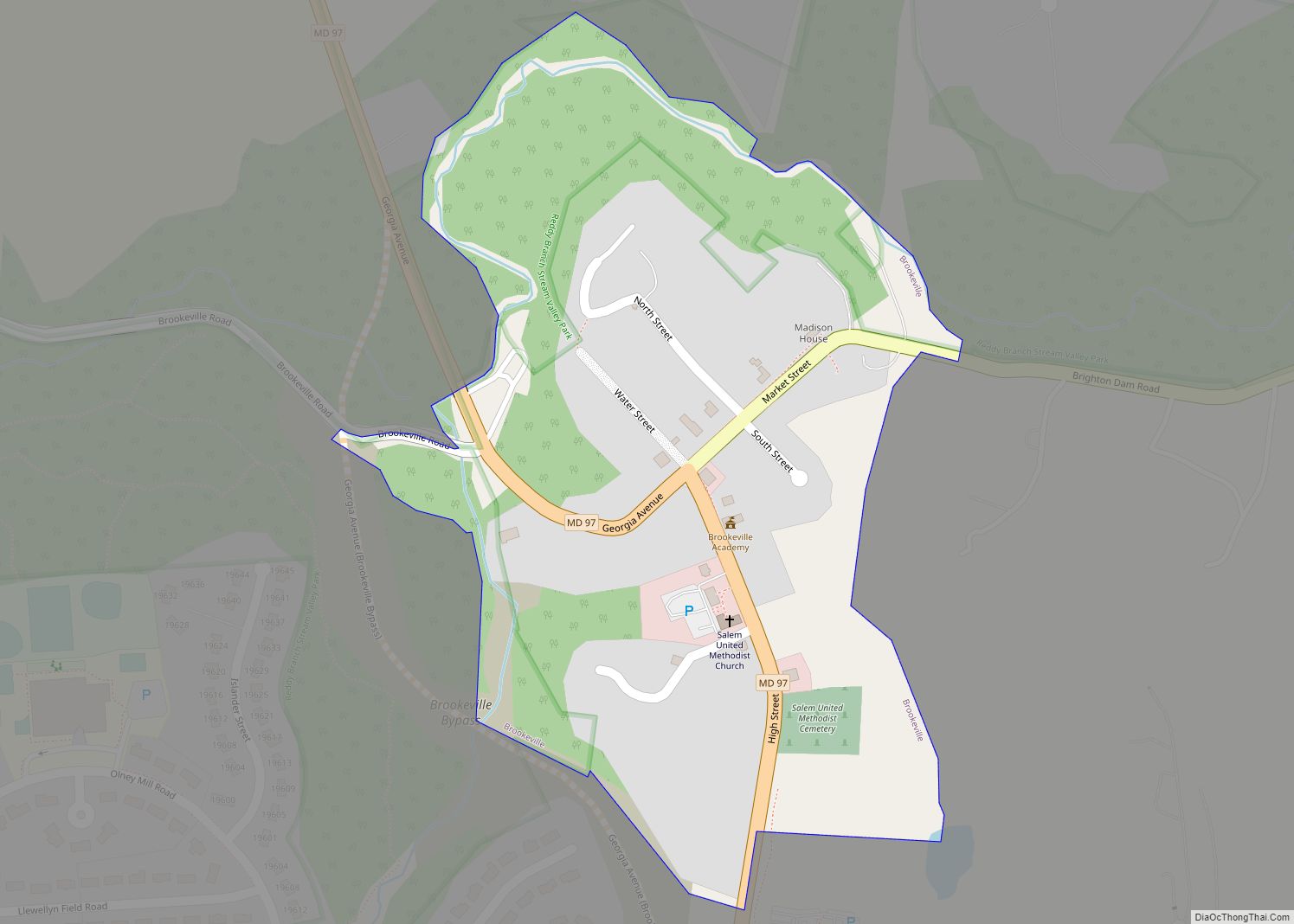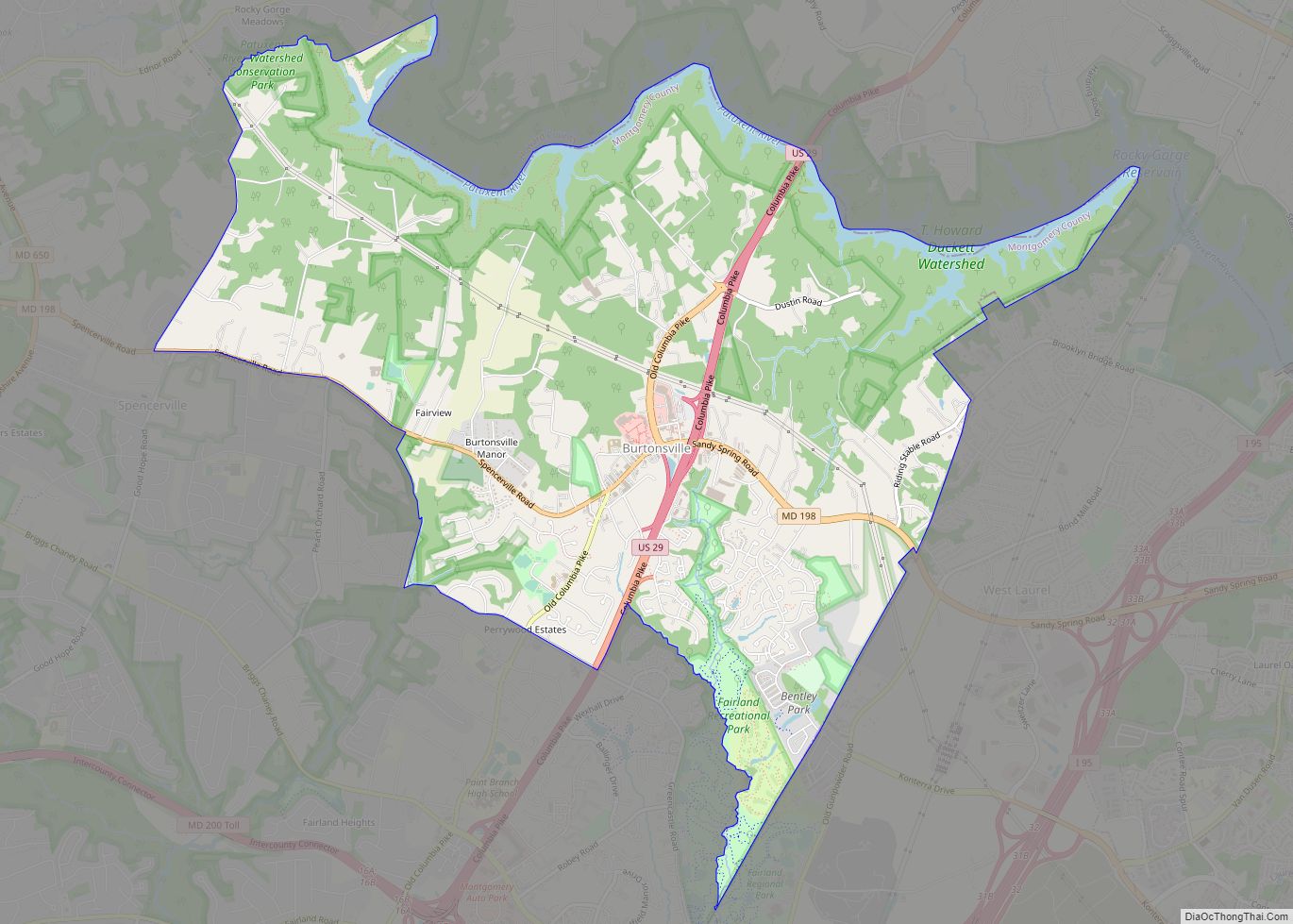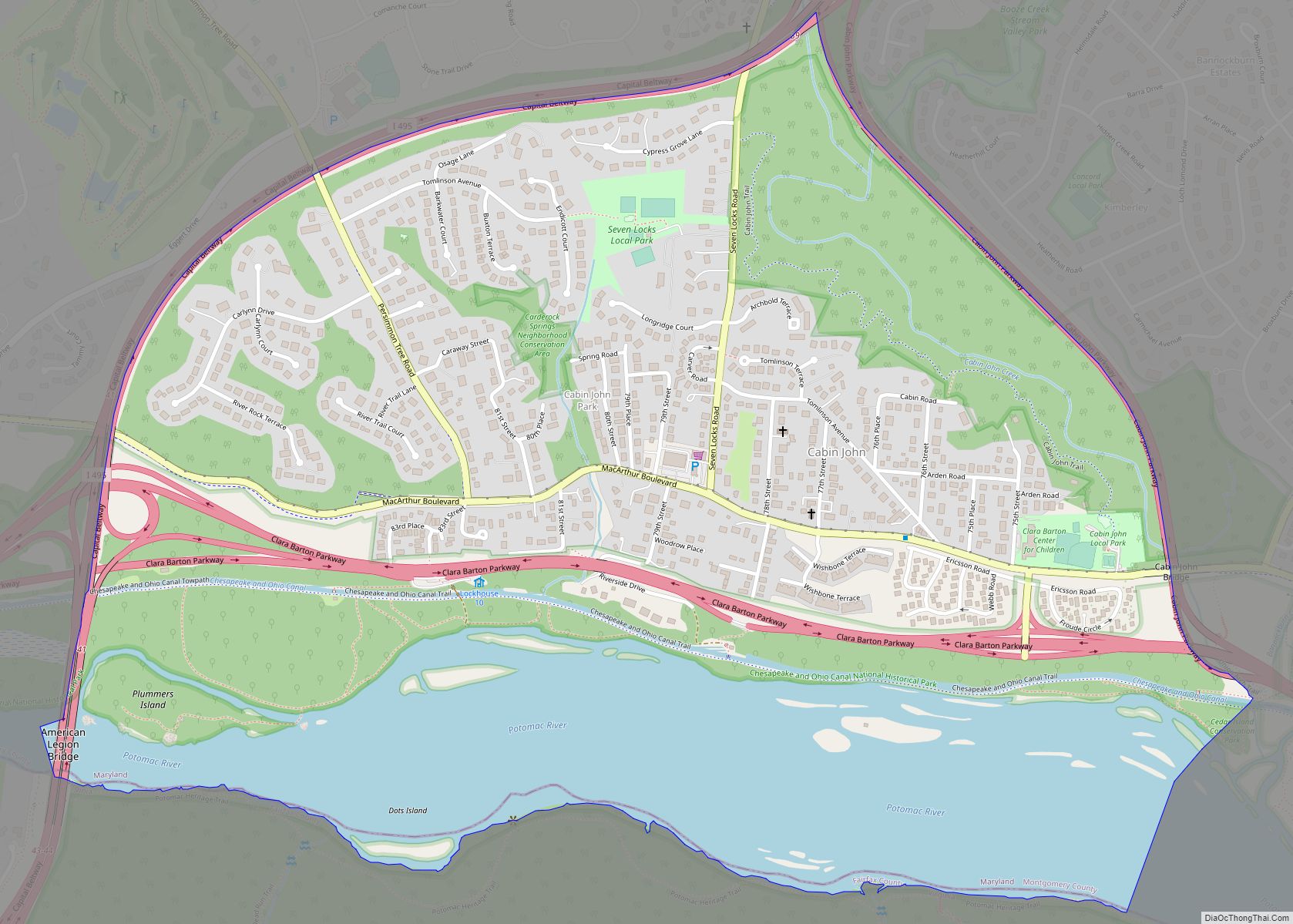Gaithersburg (/ˈɡeɪθərzbɜːrɡ/ (listen) GAY-thərz-burg), officially the City of Gaithersburg, is a city in Montgomery County, Maryland, United States. At the time of the 2020 U.S. Census, Gaithersburg had a population of 69,657, making it the ninth-largest location in the state. Gaithersburg is located to the northwest of Washington, and is considered a suburb and a primary city within the Washington–Arlington–Alexandria, DC–VA–MD–WV Metropolitan Statistical Area. Gaithersburg was incorporated as a town in 1878 and as a city in 1968.
Gaithersburg is located east and west of Interstate 270. The eastern section includes the historic area of the town. Landmarks and buildings from that time can still be seen in many places but especially in the historic central business district of Gaithersburg called “Olde Towne”. The east side also includes Lakeforest Mall, City Hall, and the Montgomery County Fair grounds, and Bohrer Park (a well-known joint community recreation center and outdoor water park for kids and families). The west side of the city has many wealthier neighborhoods that were designed with smart growth techniques and embrace New Urbanism. These include the Kentlands community, the Lakelands community, and the Washingtonian Center (better known as Rio), a shopping/business district. Consumers often come to this area during Black Friday and other shopping holidays for the deals and variety of huge brand name stores like Target and Dick’s Sporting Goods, and smaller stores like Francesca’s and Blue Mercury. Two New Urbanism communities are under construction, including Watkins Mill Town Center (Casey East and West), and the massive “Science City”. The state has a bus rapid transit line, Corridor Cities Transitway or “CCT”, planned for the western portion of the city starting at Shady Grove Metro Station and connecting all the high density western Gaithersburg neighborhoods with a total of eight stops planned in the city.
The National Institute of Standards and Technology (NIST) is headquartered in Gaithersburg directly west of I-270. Other major employers in the city include IBM, Lockheed Martin Information Systems and Global Services business area headquarters, AstraZeneca, and the French multinational corporation, Sodexo. Gaithersburg is also the location of the garrison of the United States Army Reserve Legal Command.
Gaithersburg is noted for its ethnic and economic diversity; it was ranked second for ethnic diversity among the 501 largest U.S. cities, and first among smaller U.S. cities, by WalletHub in 2021.
| Name: | Gaithersburg city |
|---|---|
| LSAD Code: | 25 |
| LSAD Description: | city (suffix) |
| State: | Maryland |
| County: | Montgomery County |
| Founded: | 1802 |
| Elevation: | 350 ft (106 m) |
| Total Area: | 10.44 sq mi (27.05 km²) |
| Land Area: | 10.32 sq mi (26.73 km²) |
| Water Area: | 0.12 sq mi (0.32 km²) |
| Total Population: | 69,657 |
| Population Density: | 6,749.06/sq mi (2,605.78/km²) |
| Area code: | 301, 240 |
| FIPS code: | 2431175 |
| GNISfeature ID: | 0593389 |
| Website: | www.gaithersburgmd.gov |
Online Interactive Map
Click on ![]() to view map in "full screen" mode.
to view map in "full screen" mode.
Gaithersburg location map. Where is Gaithersburg city?
History
Gaithersburg was settled in 1765 as a small agricultural settlement known as Log Town near the present day Summit Hall on Ralph Crabb’s 1725 land grant “Deer Park”. The northern portion of the land grant was purchased by Henry Brookes, and he built his brick home “Montpelier” there, starting first with a log cabin in 1780/3. This 1,000-acre tract became part of the landmark IBM Headquarters complex built on the then-new I-270 Interstate “Industrial”, now “Technology”, Corridor in the late 1960s to the 1970s. Benjamin Gaither married Henry’s daughter Margaret, and Benjamin and Margaret inherited a portion of Henry’s land prior to Henry’s death in 1807. Gaither built his home on the land in 1802. By the 1850s the area had ceased to be called Log Town and was known to inhabitants as Gaithersburg.
19th century
The Forest Oak Post Office, named for a large tree in the town, was located in Gaither’s store in 1851.
On July 10, 1864, using the route of present-day 355, over 10,000 Confederate troops camped overnight in the area, including the present Bohrer Park, after a one-day march from Frederick after the Battle of Monocacy. The next day the troops continued towards Washington in an unsuccessful attempt to take the city.
When the railroad was built through town in 1873, the new station was called Gaithersburg, an officially recognized name for the community for the first time. Also in 1873 the B&O Railroad constructed a station at Gaithersburg, designed by Ephraim Francis Baldwin as part of his well-known series of Victorian stations in Maryland. Rapid growth occurred shortly thereafter, and on April 5, 1878, the town was officially incorporated as the Town of Gaithersburg.
Gaithersburg boomed during the late 19th century and churches, schools, a mill, grain elevators, stores, and hotels were built. Much of this development focused around the railroad station.
In 1899, Gaithersburg was selected as one of six global locations for the construction of an International Latitude Observatory as part of a project to measure the Earth’s wobble on its polar axis. The Gaithersburg Latitude Observatory is (as of 2007) the only National Historic Landmark in the City of Gaithersburg. The observatory and five others in Japan, Italy, Russia, and the United States gathered information that is still used by scientists today, along with information from satellites, to determine polar motion; the size, shape, and physical properties of the earth; and to aid the space program through the precise navigational patterns of orbiting satellites. The Gaithersburg station operated until 1982 when computerization rendered the manual observation obsolete.
Late 20th century
In 1968, Gaithersburg was upgraded from a town to a city.
Gaithersburg remained a predominantly rural farm town until the 1970s when more construction began. As the population grew, with homes spreading throughout the area, Gaithersburg began taking on a suburban and semi-urban feel, leaving its farming roots behind. During the late 1990s and 2000s, it had become one of the most economically and ethnically diverse areas in the Washington, D.C. Metropolitan Area as well as the State of Maryland, with people from all walks of life calling Gaithersburg home. This can be seen in the local schools, with Gaithersburg High School and Watkins Mill High School having two of the most diverse student bodies in the region.
During a 1997 rainstorm, the 295-year-old forest oak tree that gave its name to the Forest Oak Post Office crashed down. The tree served as the inspiration for the city’s logo, which is also featured prominently on the city’s flag.
21st century
In 2007, parts of the film Body of Lies were filmed in the city, at a building on 100 Edison Park Drive. The film was released in 2008 and the building is now the Montgomery County Police Department’s headquarters.
On July 16, 2010, Gaithersburg was part of the area where a 3.6 magnitude earthquake was felt, one of the strongest to occur in Maryland.
After years of decline and loss of tenants, including three of its four anchor stores in 2019, Lakeforest Mall is slated to close on March 31, 2023, with plans to demolish it and redevelop the area.
Gaithersburg Road Map
Gaithersburg city Satellite Map
Geography
According to the U.S. Census Bureau, the city has a total area of 10.34 square miles (26.78 km), of which 10.20 square miles (26.42 km) is land and 0.14 square miles (0.36 km) is water.
See also
Map of Maryland State and its subdivision: Map of other states:- Alabama
- Alaska
- Arizona
- Arkansas
- California
- Colorado
- Connecticut
- Delaware
- District of Columbia
- Florida
- Georgia
- Hawaii
- Idaho
- Illinois
- Indiana
- Iowa
- Kansas
- Kentucky
- Louisiana
- Maine
- Maryland
- Massachusetts
- Michigan
- Minnesota
- Mississippi
- Missouri
- Montana
- Nebraska
- Nevada
- New Hampshire
- New Jersey
- New Mexico
- New York
- North Carolina
- North Dakota
- Ohio
- Oklahoma
- Oregon
- Pennsylvania
- Rhode Island
- South Carolina
- South Dakota
- Tennessee
- Texas
- Utah
- Vermont
- Virginia
- Washington
- West Virginia
- Wisconsin
- Wyoming


